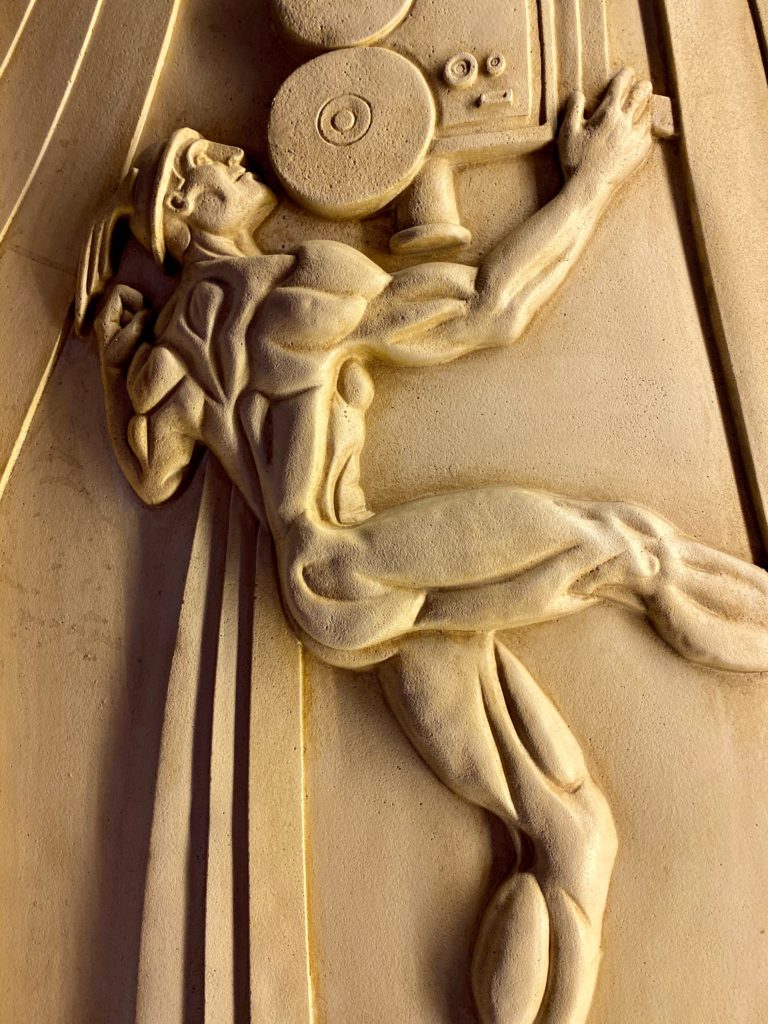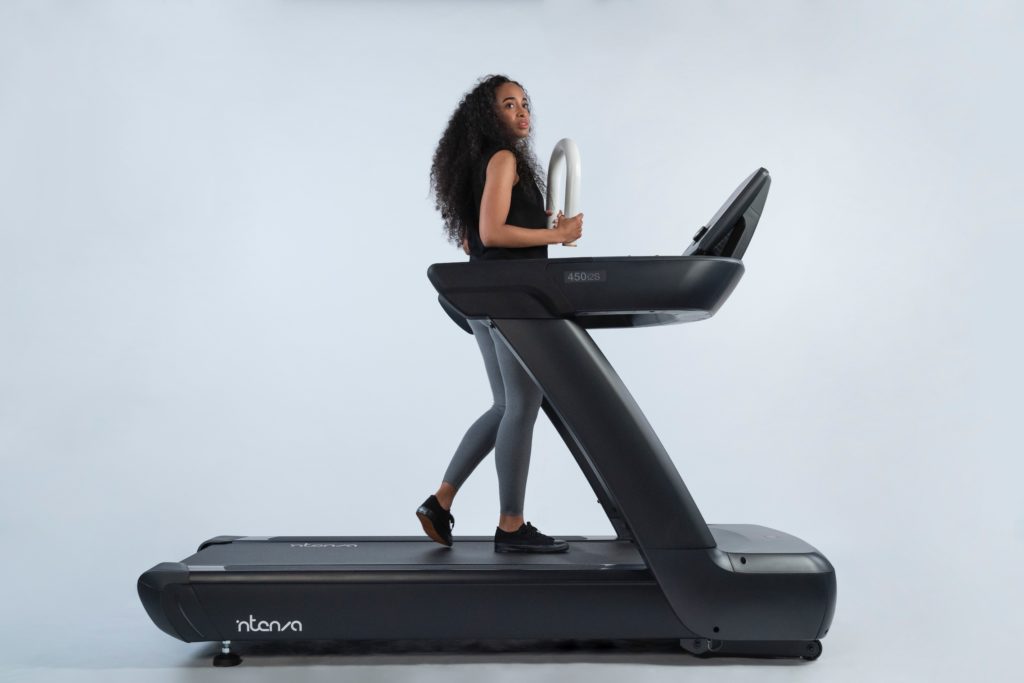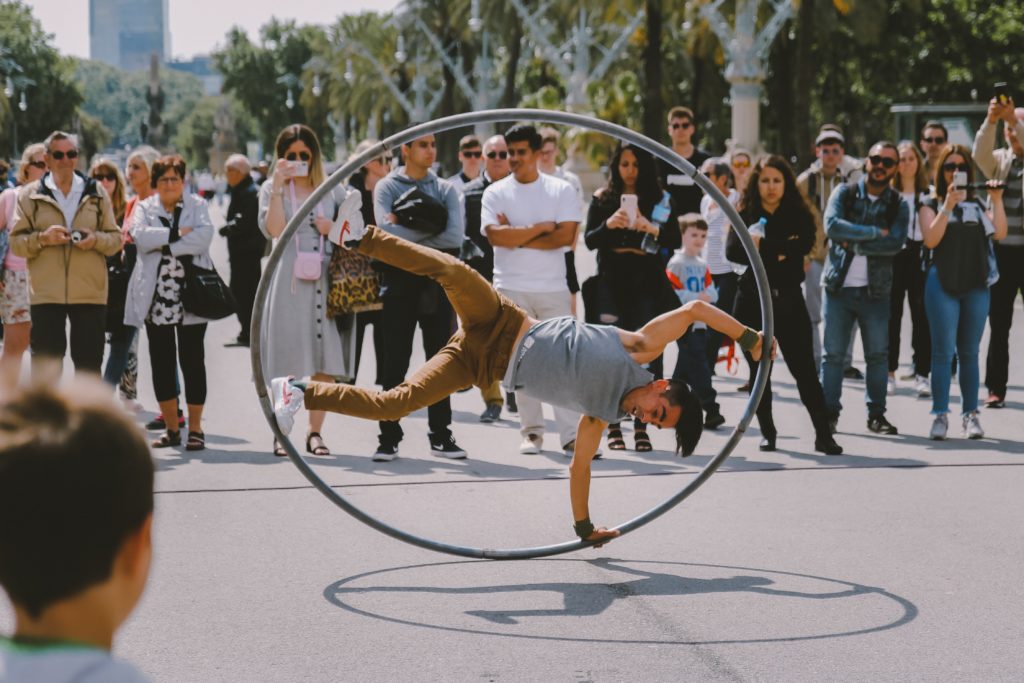There are endless ways to move our bodies. And when we cultivate a life of movement — and abandon the concept of exercise — it is transformatively pleasurable. Don’t believe it? Ask a 6-year-old!
Children vividly remind us that our bodies were made to be in motion. But before you begin to feel guilty about not “exercising” this morning, let me stop you. If you want all the physical and mental benefits of “exercise” without the guilt, then you just need to change how you look at things.
Exercise as Punishment
Exercise is a concept that transformed this pleasurable movement into punishment.
So when did this all begin? Long before 70’s jazzercise, vibration belts, or ab loungers. In fact, we can drop a pin back to 600 BC Greece, when exercise was first used to improve strength, speed, and endurance.
Before that, we were simply moving our bodies as we were running from animals, foraging for food, running, balancing, jumping, dancing, crawling, and fighting.
And it wasn’t until the Renaissance that scholars and scientists, led by Vittorino da Feltre, began studying the body and its anatomical workings, and conceptualized the idea of physical “fitness”.

From those beginnings during the Renaissance until 1879, there were many studies, books, and research about anatomical desirability. And specifically, the tortuousness of the treadmill was taken very seriously when prisons adopted the practice thanks to Sir William Cubitt, who thought 6 hours a day of climbing stairs attached to grain or water mills would “reform stubborn and idle convicts.” This practice wasn’t abandoned until late into the 19th century when it was recognized as too cruel a punishment.
“The treadmill was invented in the early 19th century, when penal philosophers were trying to work out a punishment that was just short of the death penalty.”
Vybarr Cregan-Reid
Later, in 1902, Dudley Allen Sargent, director of the Hemenway Gymnasium at Harvard, created the Universal Test for Strength, Speed, and Endurance. He ruthlessly and uncompassionately claimed that “without solid physical education programs people would become fat, deformed and clumsy”.
Yep, those were the words: fat, deformed and clumsy. It doesn’t take a PhD in Anatomical studies to recognize that this fear-based tactic planted the seeds for our fear-based relationship with moving our beautiful bodies.
Breaking the Fear Cycle
Now I want you to think back to when you were young playing outside with friends, running in the backyard, maybe through a sprinkler. If you were anything like me, you spent all day outside on your bike, roaming the streets, playing double dutch, or spending hours playing in the pool.
Was any of that punishment?

Of course not. Our bodies were meant to move. Unfortunately, our modern culture has planted the seed that exercise is punishment for when we ate that extra slab of pizza or drank that glass of wine.
But if we can bring ourselves back to when we saw movement as joyful and natural — maybe before our teachers demanded we “sit still” for 6 hours — we can rewire our brains to remember that movement CAN be blissful.
Now, I’m not saying that this transition is going to be easy. If you’ve not found pleasure in movement in a while, you will need a fair amount of positive memories and re-established neuropathways to rechoreograph your thinking.
Rediscovering the Joy of Movement
The good news as you embark on your rediscovery of the joy of movement is that your options are vast — and FUN!
As I said earlier, there are innumerable ways to move your body. From jumping rope, to learning a new dance, to hula hooping, to getting down on the floor and playing with your dog or kids, to stretching, to hanging, to cleaning your desk, commuting by foot to lunch, to biking to work, to walking while you take your calls during the day — you are limitless when it comes to movement. Even if you have a desk job.
What I find most powerful is cultivating a routine that incorporates various sorts of movement into my daily existence.
Now, I naturally integrate various movements into my day according to my work calendar. In the morning, I get in 45 to 60 minutes of movement and stretching, which takes advantage of our naturally heightened cortisol levels (that typically occurs between 7 and 10 am), without overdriving my adrenals with caffeine.

During the day, I often have back-to-back calls with only a few minutes in between. While I could take that time to scroll on my phone or check emails, I have found that taking that time to play my favorite 3-minute song and move around, do some jumping jacks, pushups, or a few yoga stretches gets my blood pumping and leaves me invigorated for my next call. Not only does this up my NEAT score, and keeps my body engaged – it prevents me from feeling exhausted by midday.
And since I have the luxury of working from home (and it really is a luxury I am grateful for), I try to take a midday break after lunch to walk my dog. Even if it’s short, it allows me to get some fresh air and sunshine.
And do you know what none of this feels like? Yep, it never feels like “exercise” and definitely doesn’t feel like punishment. Instead, it feels like pure joy.
So, even if you can only carve out a few minutes each day, making the time to get moving is incredibly powerful for improving your energy levels and refreshing your brain!
Happy Moving!
Sources
Worrall, S. (2017). We Evolved to Run-But We’re Doing It All Wrong. National Geographic. https://www.nationalgeographic.com/science/article/running-books-jogging-health-science
Video Exercise Daily. 15 Min. Ab Lounge. Youtube. https://www.youtube.com/watch?v=ZGs6NqVvJ9w
Georgoulis, A. D., Kiapidou, I.S., Velogianni, L., Stergiou, N., & Boland, A. (2006). Herodicus, the father of sports medicine. Springer Link. https://link.springer.com/article/10.1007/s00167-006-0149-z
Alkhayl, F. F. A., Ismail, A. D., Morales, C. C., Wilson, J., Radjenovic, A., Johnston, L., Welsh, P., Sattar, N., Gill, J. M. R., Preston, T., & Gray, S. R. (2022). Muscle protein synthesis and muscle/metabolic responses to resistance exercise training in South Asian and White European men. Nature. https://www.nature.com/articles/s41598-022-06446-7
Grendler, P. F. (2002). The Universities of the Italian Renaissance. Google Books. https://books.google.com/books?hl=en&lr=&id=5hTHP2I-A14C&oi=fnd&pg=PP13&dq=vittorino+da+feltre+anatomy+&ots=KHG61JRw87&sig=-Q7Eir6rHQe41SgkKyz3zhyz0Sg#v=onepage&q=vittorino%20da%20feltre%20anatomy&f=false
Eschner, K. (2017). In the 19th Century, You Wouldn’t Want to Be Put on the Treadmill. Smithsonian Magazine. https://www.smithsonianmag.com/smart-news/19th-century-you-wouldnt-want-be-put-treadmill-180964716/
Sargent, D. A. (1902). Universal Test for Strength, Speed and Endurance of the Human Body. Google Books. https://books.google.com/books?hl=en&lr=&id=_RRRAQAAMAAJ&oi=fnd&pg=PA3&dq=1902,+Dudley+Allen+Sargent,&ots=j3Eq-v3zp2&sig=nYMKda2CaswChdzer0QAMuqDc8w#v=onepage&q=1902%2C%20Dudley%20Allen%20Sargent%2C&f=false
Ippolito, H. S. (2021). Endless Hours of Slouching On Zoom Calls Causing You Pain? These 5 Simple Steps Are Your Answer! The MAPS Institute. https://themapsinstitute.com/endless-hours-of-slouching-on-zoom-calls-causing-you-pain-these-5-simple-steps-are-your-answer/
Araujo, L. (2021). Understanding the Difference Between Routine and Habit and Why It’s Critical to Our Functionality. The MAPS Institute. https://themapsinstitute.com/understanding-the-difference-between-routine-and-habit-and-why-its-critical-to-our-functionality/
Araujo, L. (2021). That Run or Yoga Class Isn’t Saving You From the Risks of Too Much Butt-in-Chair Time, But This NEAT Trick Will. The MAPS Institute. https://themapsinstitute.com/that-run-or-yoga-class-isnt-saving-you-from-the-risks-of-too-much-butt-in-chair-time-but-this-neat-trick-will/
Jackson, T., Gao, X, & Chen, H. (2014). Differences in neural activation to depictions of physical exercise and sedentary activity: an fMRI study of overweight and lean Chinese women. International Journal of Obesity. https://www.nature.com/articles/ijo2013245
Berge, J., Hjelmesaeth, J., Kolotkin, R. L., Storen, O., Sanda, S. B., Hertel, J. K., Gjevestad, E., Smastuen, M. C., Helgerud, J., & Bernkler, T. (2022). Effect of aerobic exercise intensity on health-related quality of life in severe obesity: a randomized controlled trial. BMC Part of Springer Nature. https://hqlo.biomedcentral.com/articles/10.1186/s12955-022-01940-y
Araujo, L. (2021). The Powerful, but Little-Known Relationship Between Fitness and BDNF. The MAPS Institute. https://themapsinstitute.com/the-powerful-but-little-known-relationship-between-fitness-and-bdnf/
Foreman, J. (2020). Exercise and Telomeres. Psychology Today. https://www.psychologytoday.com/us/blog/nation-in-pain/202004/exercise-and-telomeres
